What are the best things to do in Hanoi? We had planned to spend three full days in Hanoi, but due to the impact of Typhoon Yagi, we only had two and a half days to visit the most important places and do the things we wanted to do.
In this article, I will share our experiences while visiting Hanoi.

We took an early flight from KLIA with MAS airline, which lasted slightly over 3 ½ hours from Kuala Lumpur to Hanoi. After arriving at Hanoi Noi Bai International Airport, some teammates purchased local 5G SIM cards and exchanged currency. I used DG roaming, which worked well during my 10-day trip to Hanoi.
1. The Old Quarter
We arrived late in the afternoon, checked into the Mina Hotel at the Old Quarter, and then strolled around the Old Quarter to find food.
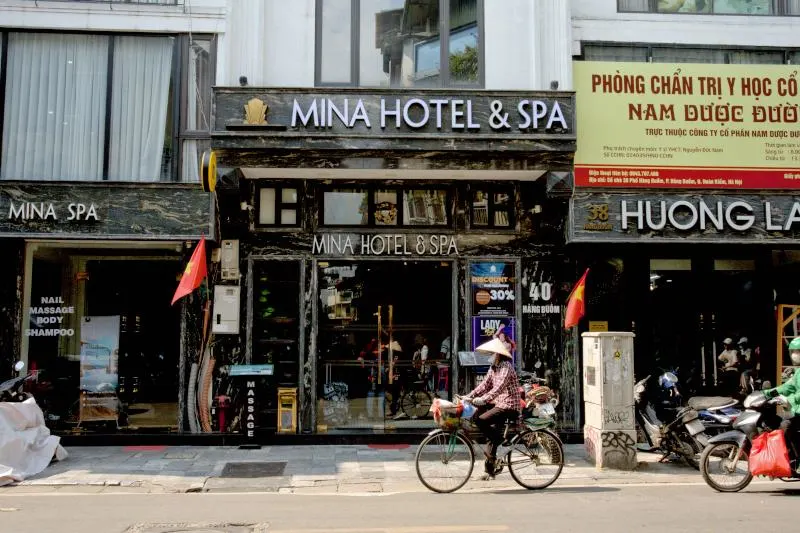
This hotel is strategically located at the junction of the famous Bear Street. It is highly convenient to stay here, as we can roam around the most happening places in Hanoi during the day and even until midnight.
The Old Quarter is bustling with activities. We can even have a haircut at the roadside for just a few dollars.
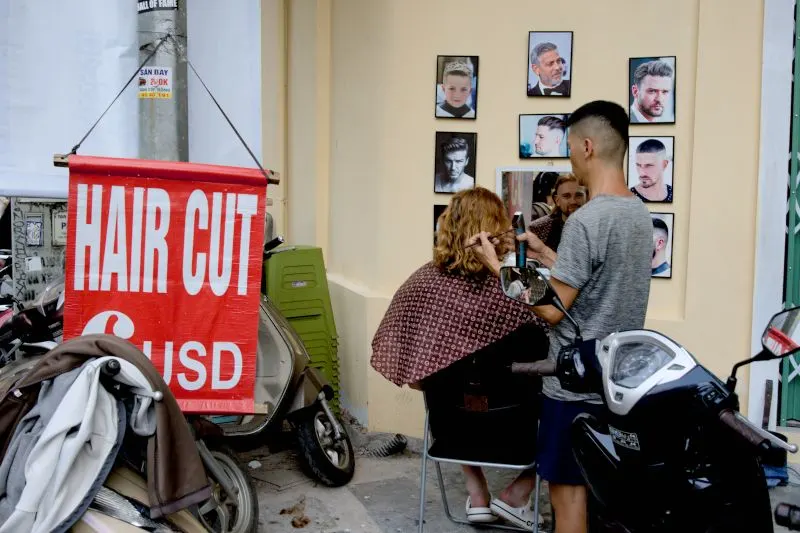
While exploring, I encountered a middle-aged woman cooking with a miniature wok by the roadside. I ordered a local omelet through gestures and sat on the stool to enjoy it like a local. The taste is subjective, but the unique combination of ingredients, while nearly squirting down to enjoy, was a rare experience.
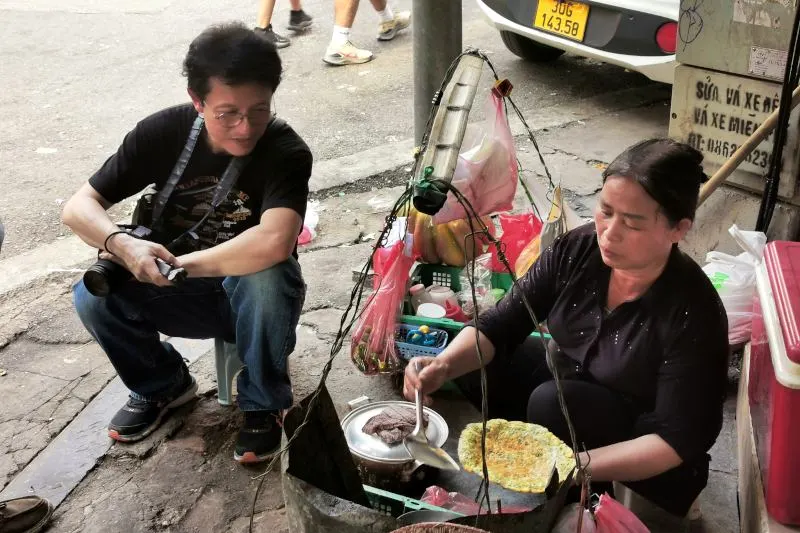
There are also many street food vendors. Apart from the street vendors, there are also some elaborately decorated cafes in this area.
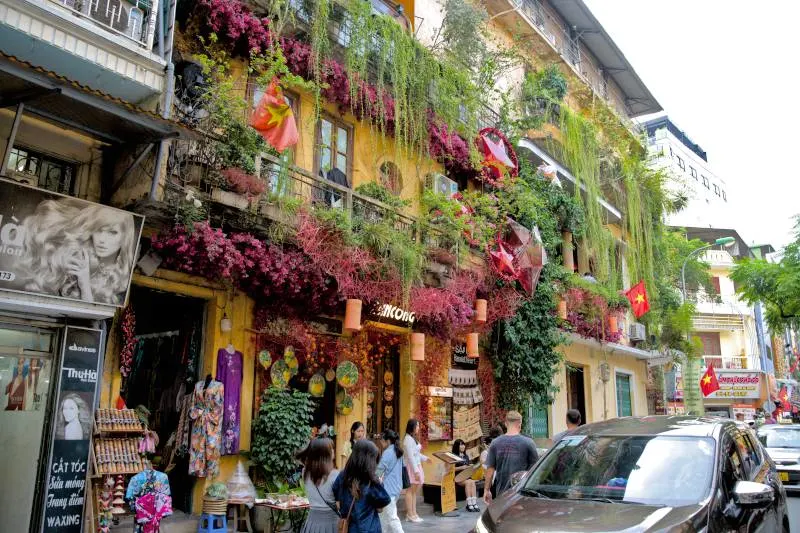
We ended up choosing a restaurant to order some local beef (phở bò), chicken noodles (phở gà), bun cha, and other traditional Vietnamese dishes. The young man who took our order spoke English fluently. The prices are not very expensive; you can see them on the menu on the wall.
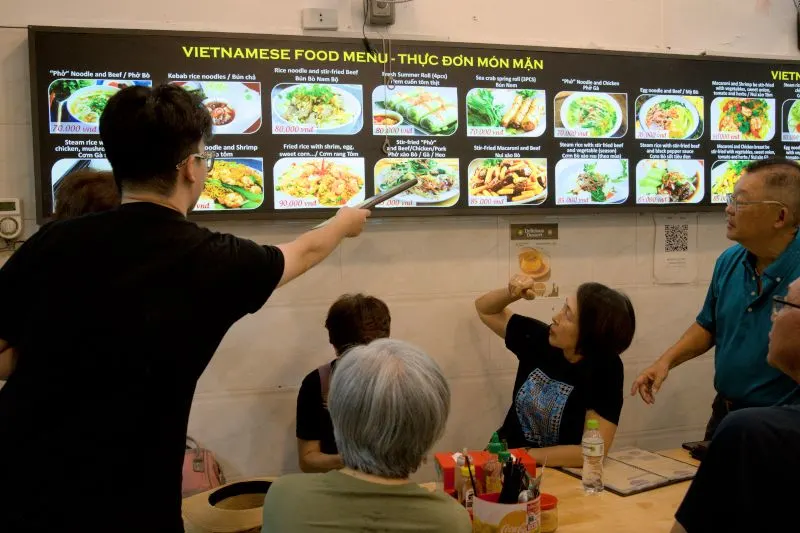
We returned to the Hanoi Old Quarter at night, where Hanoi's most popular nightlife is. The environment was so different from during the daytime, with numerous cafes, bars, live music, and eateries along the street. We could hardly navigate through so many people, and countless people from the bars asked us to stop for a drink. Numerous tables and chairs were set up on both sides of the small lane, leaving little space to walk through.
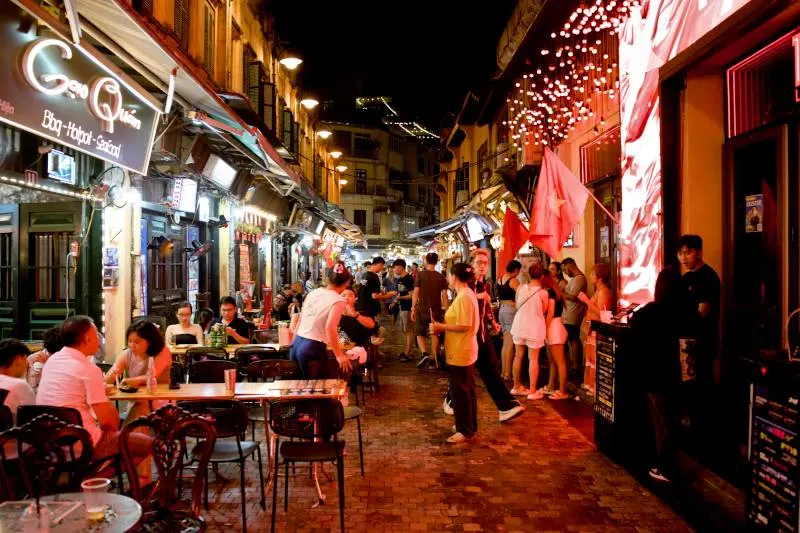
If you like this kind of environment, it will be the best place to have a fantastic night and enjoy the exceptionally vibrant vibe in Hanoi.
The Old Quarter can be traced back to the 11th century when King Ly Thai To relocated the capital from Hoa Lu to Hanoi. This move established the district as a hub for trade and craftsmanship. Over time, it became the residence of various artisan guilds, each specializing in specific trades. The area earned the nickname "36 Streets" despite there being over 70 streets in the region today.
2. Hoàn Kiếm Lake
Hoan Kiem Lake is about a ten-minute walk from where we had our lunch. It is a small lake in the middle of the city but very picturesque. A small temple is in the middle of the lake, and a beautiful red bridge crosses the water.
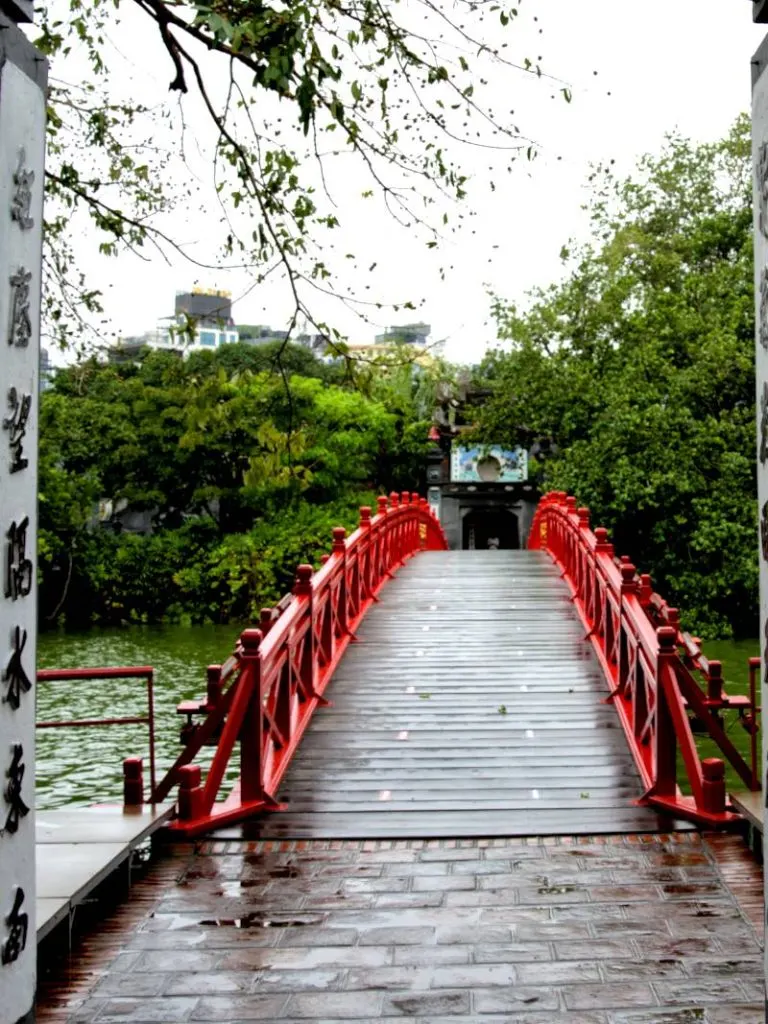
There are walkways for people to jog and relax. We didn't stay here for too long as we were heading to the train cafe, but we returned to this place a few days later, just after Typhoon Yagi hit Hanoi.
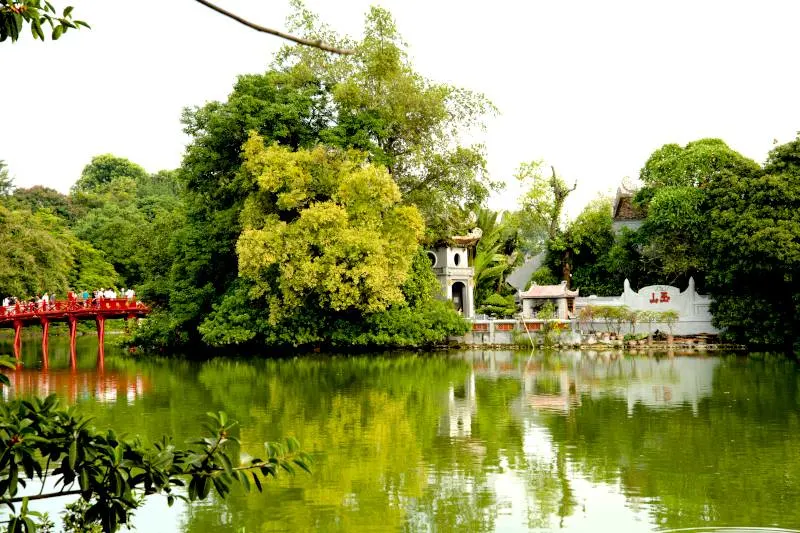
Today is the second of September, Vietnam's Independent Day and Vietnam flags are being raised everywhere in the city.
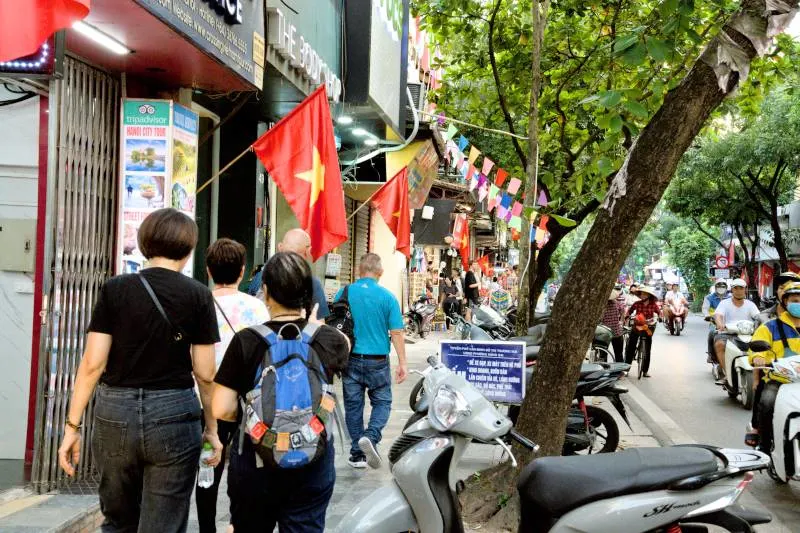
We visited Halong Bay, Sa Pa, and Ninh Binh and returned to Hanoi a few days later, and on the day Hanoi was badly hit by the typhoon. That morning, we arrived at Hoàn Kiếm Lake again, and this was what happened.
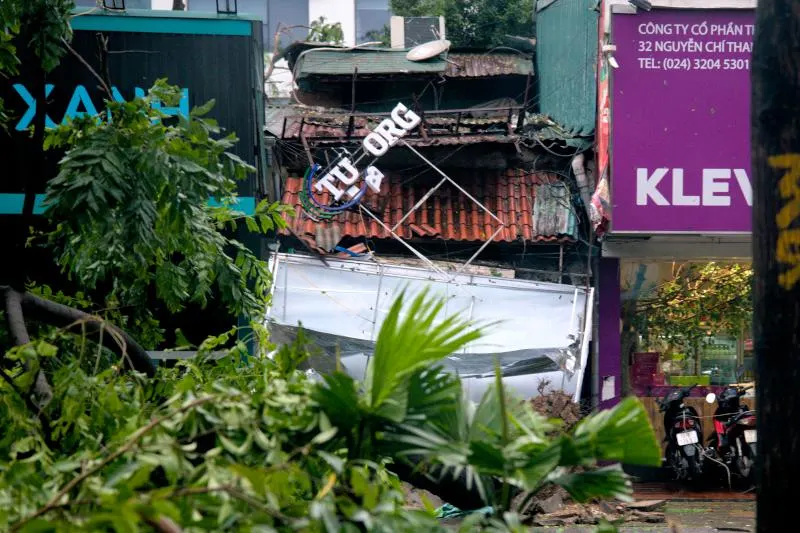
Unfortunately, a visit to the Ngoc Son Temple at the lake was temporarily closed due to the typhoon.
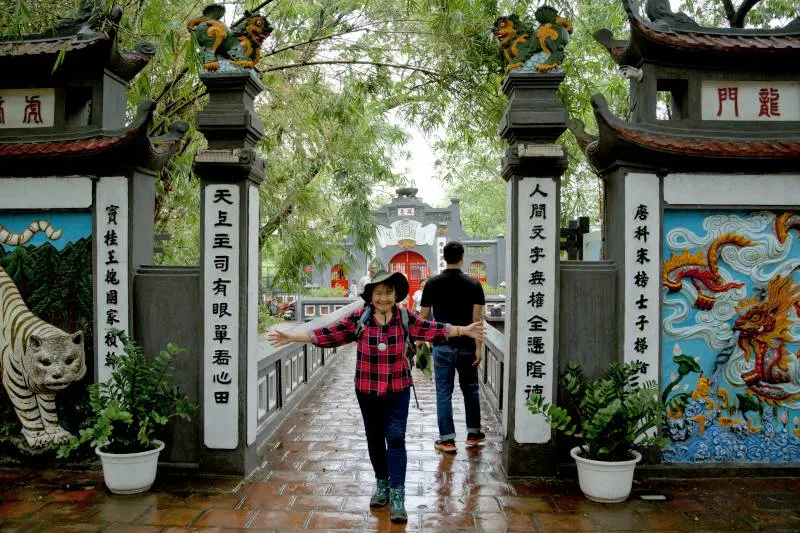
So, instead, we walk along the lake and enjoy the scenery. The wind has died down somewhat and is relatively calm during this time. But there are fallen trees all over, and here are more images.
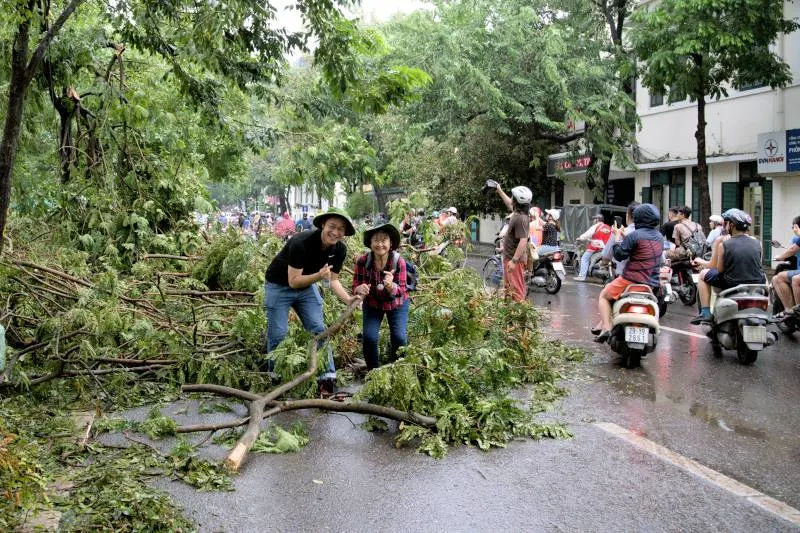
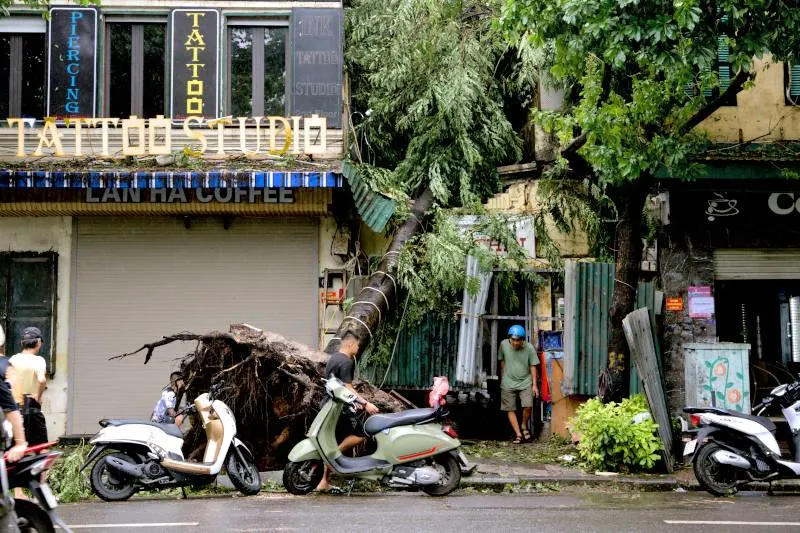
So we crossed the road to take some photos at the Monument “Quyết Tử Cho Tổ Quốc Quyết Sinh” (Determined to Brave Death for the Survival of the Fatherland).
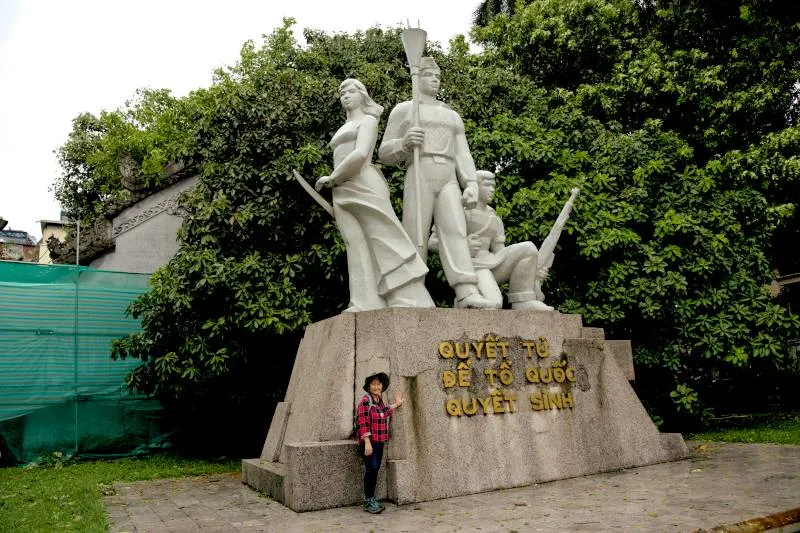
Hoàn Kiếm Lake, also known as Sword Lake, is a freshwater lake in the historic center of Hanoi, Vietnam. Its significant historical importance dates back to the 15th century when Emperor Le Loi renamed it after defeating the Ming Dynasty. Legend has it that while boating on the lake, Le Loi encountered a giant golden turtle that requested the return of a magical sword given to him by the Dragon King to defeat the Chinese. After returning the sword to the turtle, it submerged back into the depths. In honor of this event, Le Loi changed the lake's name to "Hoàn Kiếm," which translates to "Lake of the Returned Sword."
3. Train Cafe
The train cafe is about 3 km from where we stayed. This place is worth visiting because there are rows of cafes on both sides of a train railway. It is unique because the cafes are incredibly close to the railway, allowing you to feel the train passing right before us as you enjoy your drink.
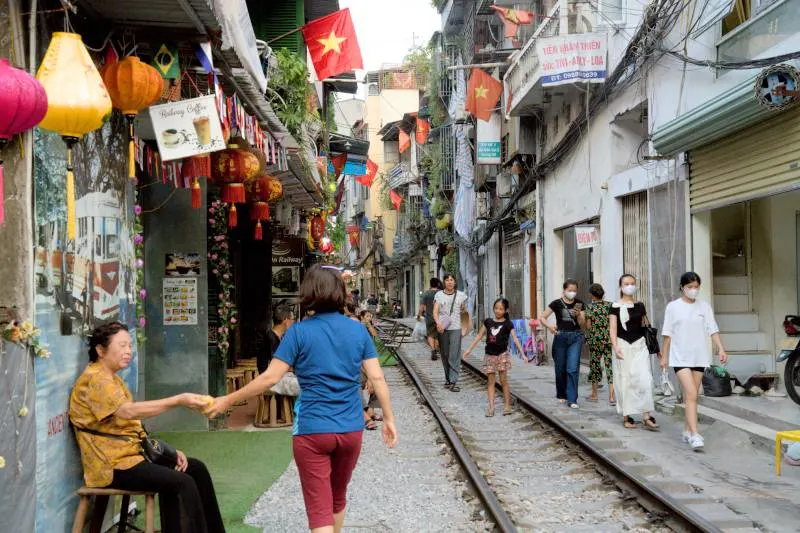
There were numerous cafes to choose from. We eventually chose a cafe with an amiable and helpful owner. They informed us that a train would arrive at 7:00 pm from the left and the next one would come at 7:20 pm from the opposite side. We ordered some drinks and patiently waited for the trains.
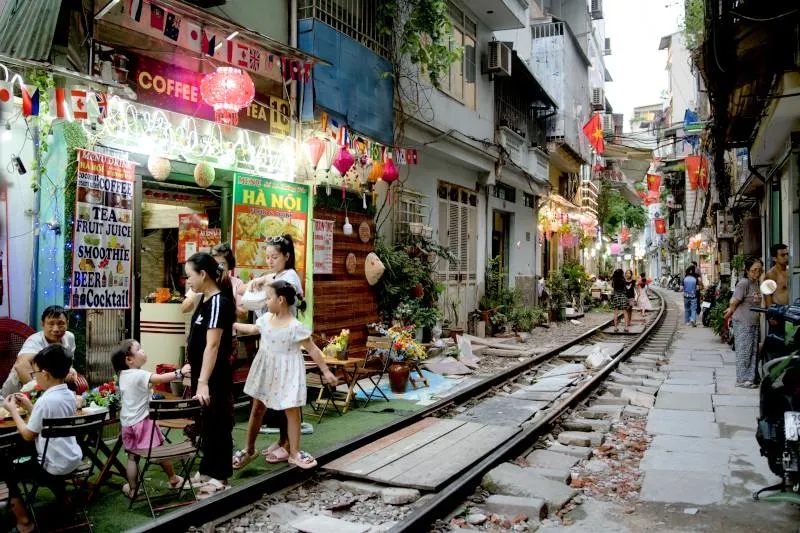
It felt a bit dangerous, and more safety precautions should be taken at this place. As the train passed in front of us, I could feel the wind blowing on my face and had to squat down as it passed just less than 6 feet in front of me. (The train was traveling full speed, sweeping right before us.)
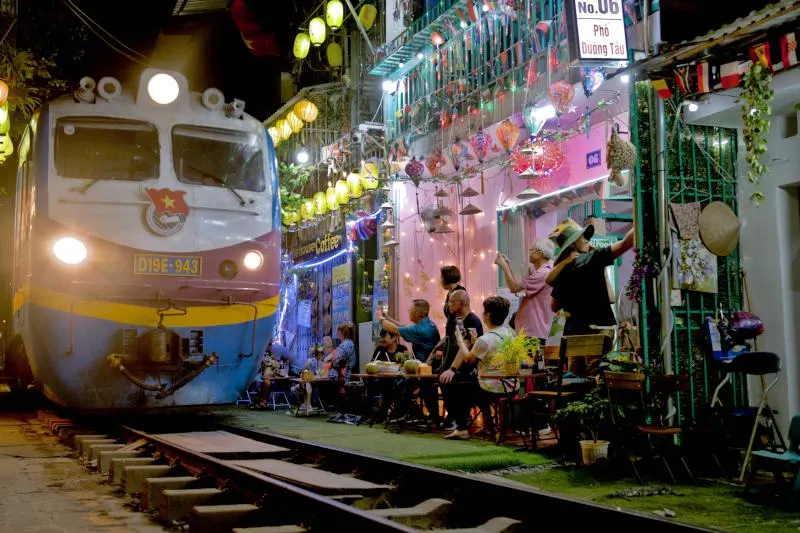
While the photos only partially capture the experience. I recommend watching the videos at the end of this article to see how the train passes right in front of us! This experience was a highlight of our trip.
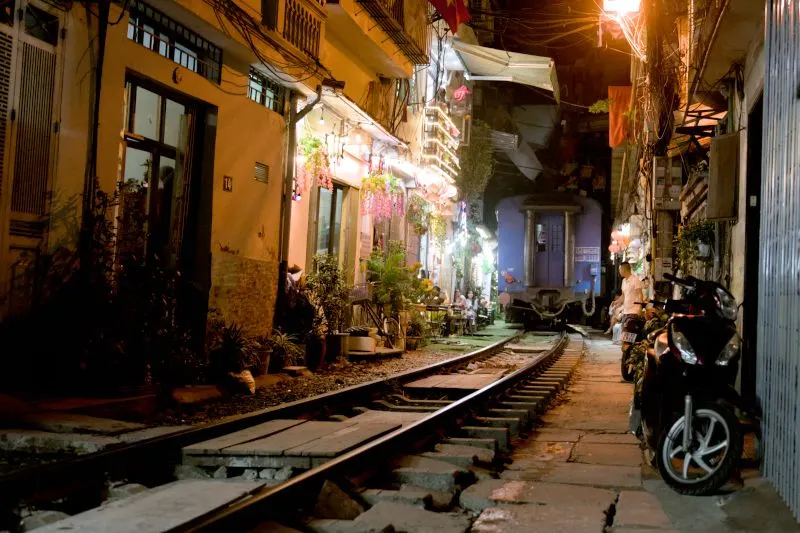
The train cafes along Train Street offer visitors a unique and thrilling experience. These cafes are right next to active train tracks, allowing customers to enjoy their beverages while trains pass just a few feet away. The railway was built during the French colonial era in the early 20th century and has become an essential part of local life. Over time, small coffee shops began to appear along the tracks, becoming a popular destination for locals and tourists looking for a unique experience.
4. Dong Xuan Market
We dropped by Dong Xuan Market while we returned to Hanoi from Sa Pa, a famous Hanoi market. The prices here are slightly higher, mainly for tourists. They sell souvenirs, garments, food, nuts, etc., primarily. According to my tour guide Andy, the locals would prefer to shop elsewhere as the prices are lower.
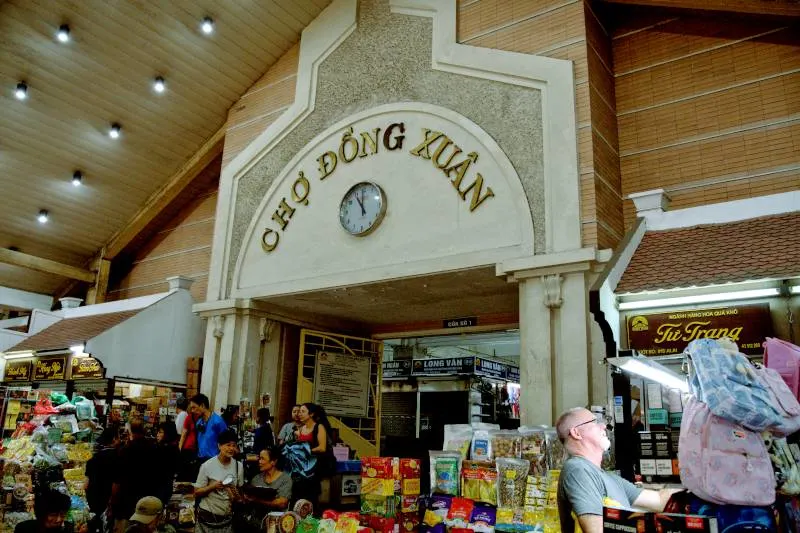
5. Rib porridge (cháo sườn)
We then headed to the rib porridge store, which is located just opposite the market. It is a small store with many people sitting on stools and enjoying their porridge, putting on plastic chairs, not tables. We followed the Vietnamese people’s practice and had a great experience.
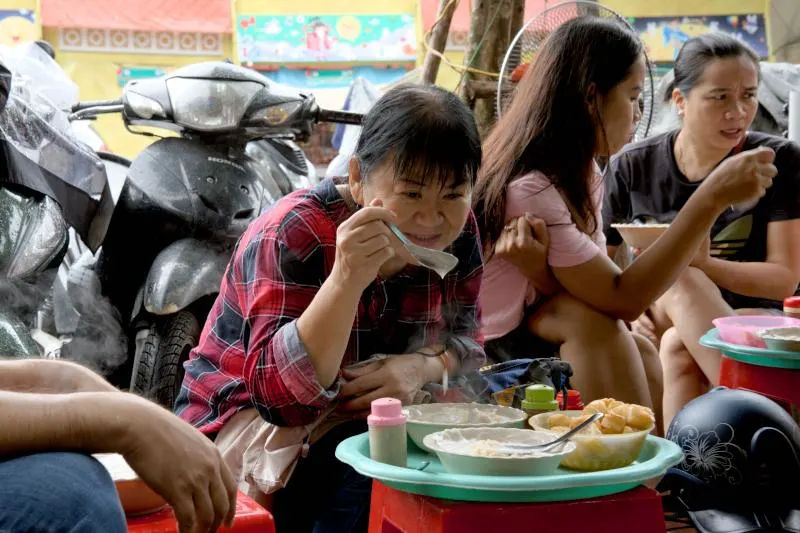
The most unique aspect of the porridge is that it is made with ground rice instead of whole grains. You can see in the image that it is exceptionally smooth. The taste is also excellent and pretty unique in Vietnam, which I had never tried before.
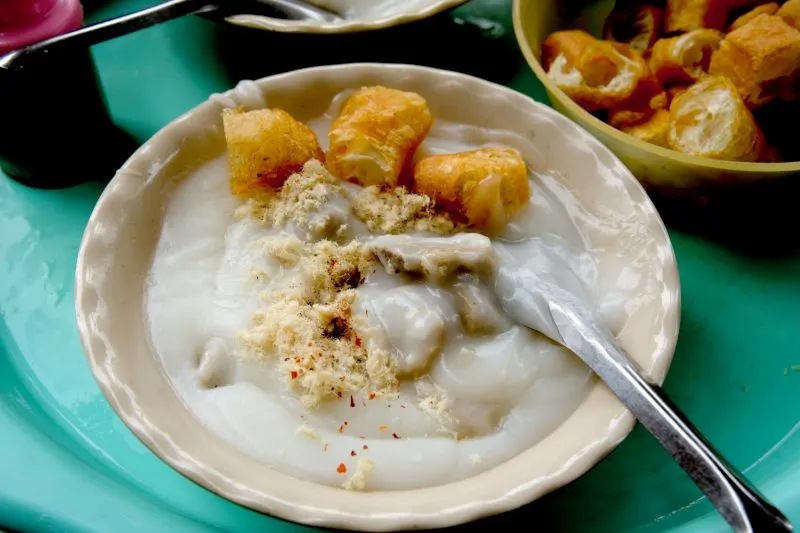
I highly recommend trying this store. According to our guide, it is a place that he and his family have been patronizing for many years.
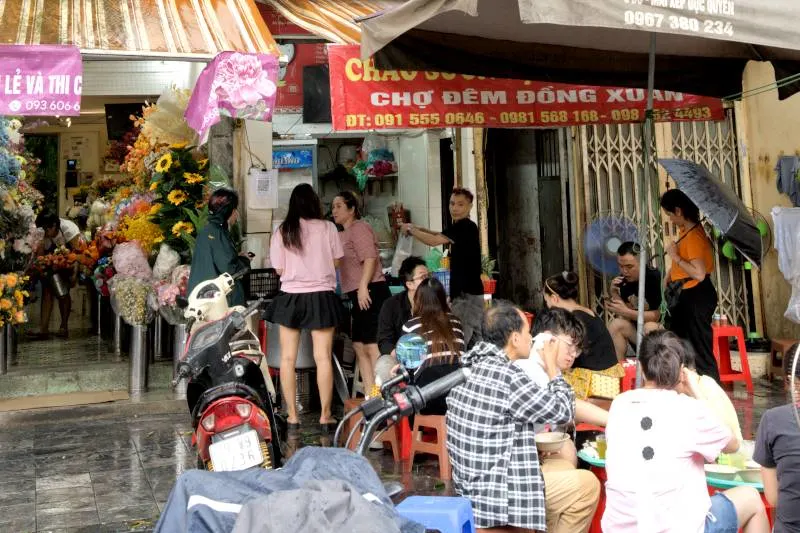
Cháo sườn is typically made by cooking finely ground rice into a smooth porridge, mixed with pork ribs or rib cartilage, and often accompanied by crispy fried dough sticks (quẩy). The base of cháo sườn consists of rice that is finely ground into flour and then simmered with pork broth. Including tender pork ribs or cartilage provides the porridge with a flavorful and textured taste. It is commonly garnished with fried shallots, pepper, and chili powder for extra spiciness.
6. Egg coffee at Cafe Giang
After enjoying the rib porridge, Andy took us to one of the most famous cafes in Hanoi, Cafe Giang, which is known for its unique egg coffee.
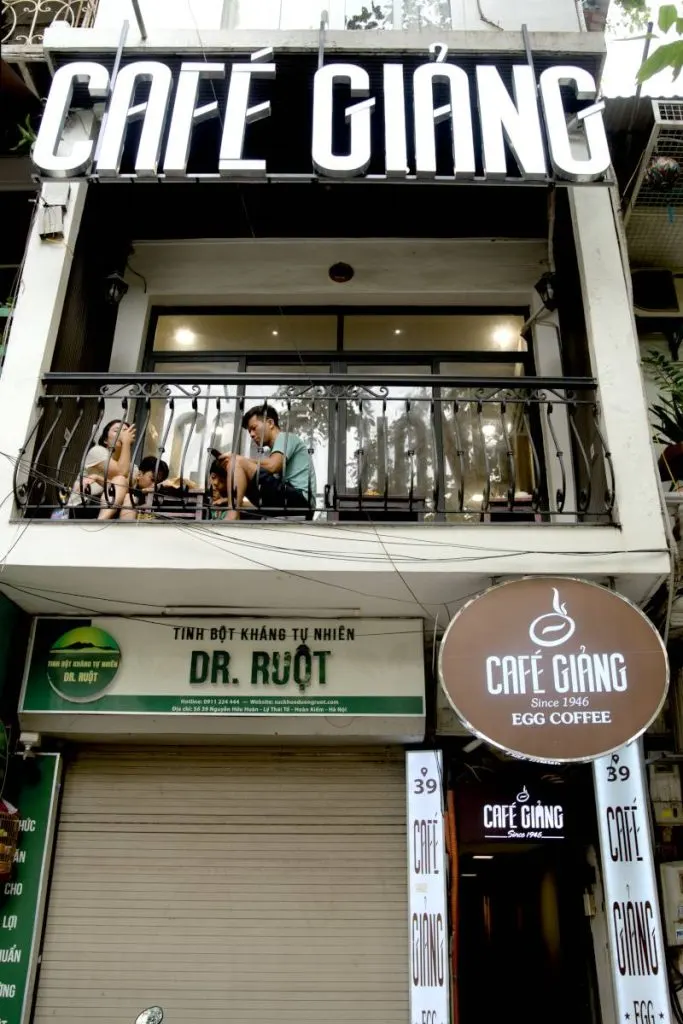
This unique coffee is a specialty of Vietnam. The flavor differs from regular coffee, with the thick beaten egg yolk floating on top. For a more enjoyable treat, mix the egg foam with the coffee.
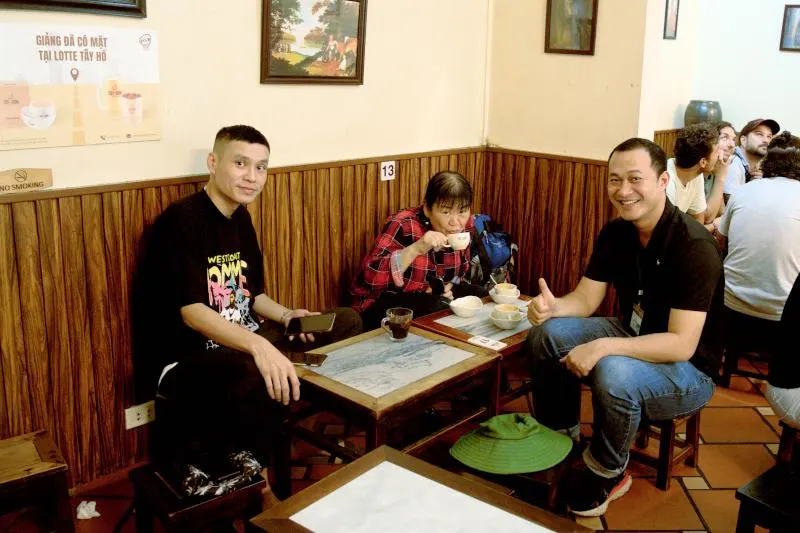
The cafe has a few floors, and we sat on the comfortable first floor, a nice place to relax. In addition to coffee, they also serve a variety of desserts.
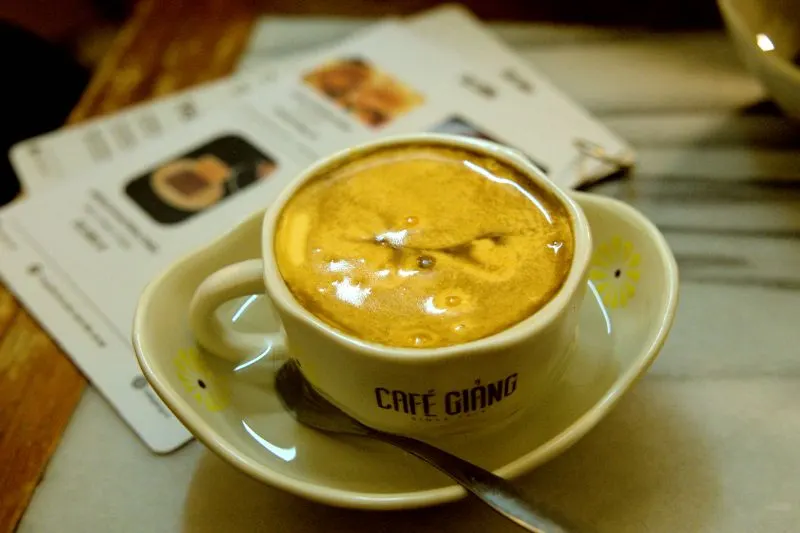
Egg coffee was invented in 1946 due to a shortage of fresh milk in Vietnam. Nguyen Van Giang, a bartender at the Sofitel Legend Metropole Hotel, wanted to create a unique beverage to replace cappuccinos for his customers. Through experimentation, he discovered that whipped egg yolks could replicate the creamy texture of milk. To make egg coffee, egg yolks are beaten with sugar and condensed milk until they form a light, frothy mixture, which is poured over hot coffee. This innovation led to the opening of Giang Café, which is still famous for its egg coffee today.
7. Bánh mì at Bánh Mì Mama
Our lunch consisted of egg coffee, rice porridge, and the famous Bánh mì. We originally intended to go to Bánh mì Bami to sit down and have our lunch, but it was closed due to the typhoon. So, we headed to the St. Joseph Cathedral and then got takeout at Bánh Mì Mama near the cathedral.
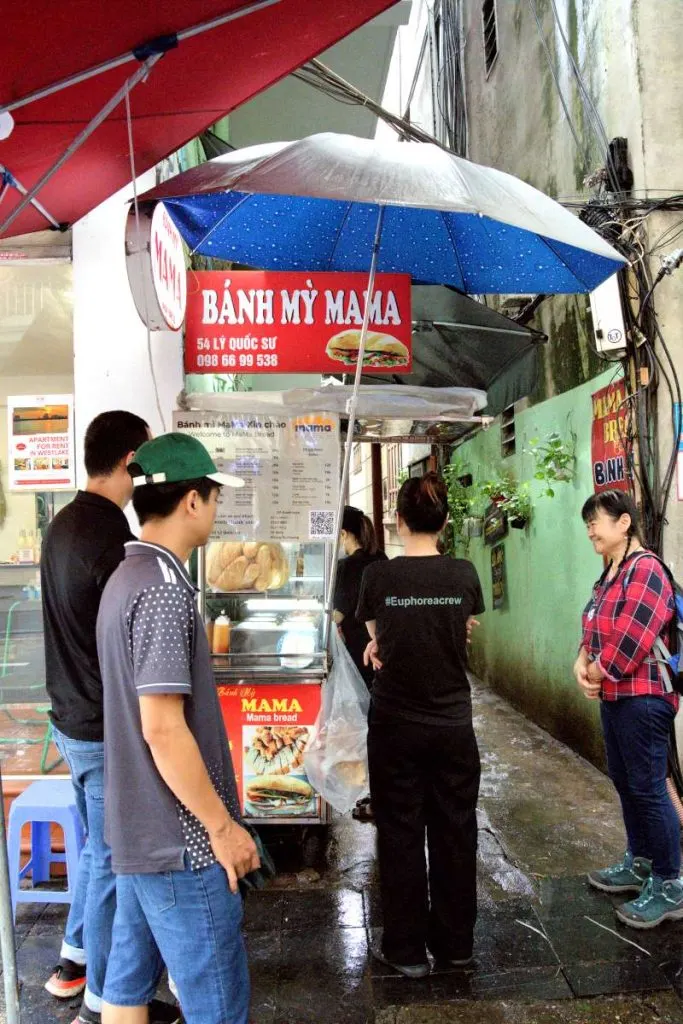
Bánh Mì Mama is a small store at the entrance of a narrow lane, but according to Andy, it is usually lined with a long queue. We were lucky and only had to wait for a few customers as it was not the peak hour.
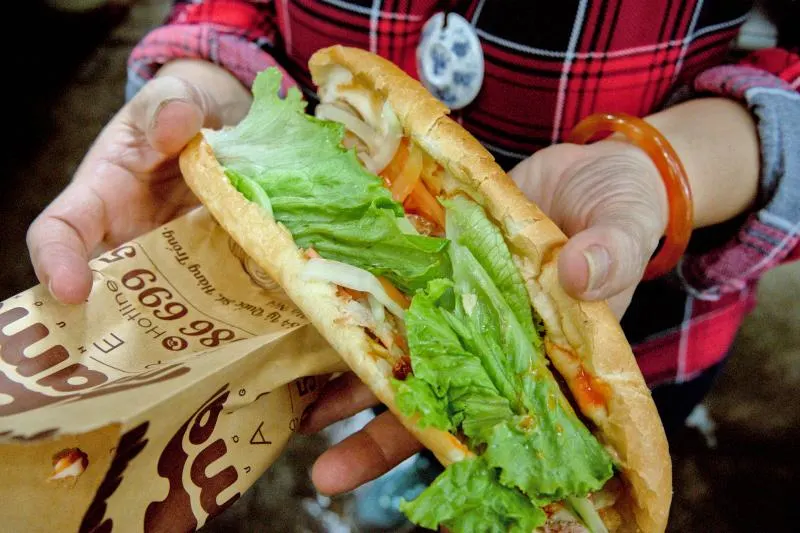
The banh mi was exceptionally crispy and delicious, which is the highlight, regardless of the chosen ingredients. We thoroughly enjoyed it, and I highly recommend trying it in Hanoi.
8. St. Joseph Cathedral
St. Joseph Cathedral is only a minute's walk from Bánh Mì Mama. The situation here was a bit chaotic because there were many fallen trees, and we even saw a radio station interviewing local people about the damage due to the typhoon. We took some photographs before the Cathedral but didn't go inside because we needed to continue our journey to Ninh Binh that day.
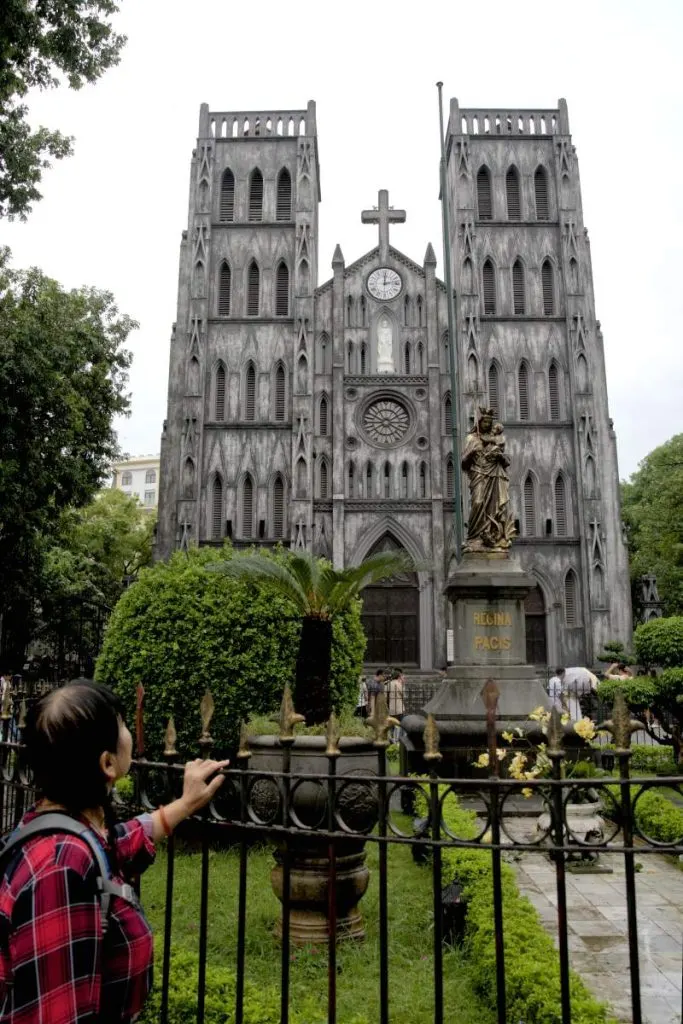
St. Joseph's Cathedral, also known as Nhà thờ Lớn Hà Nội in Vietnamese, is the cathedral of the Roman Catholic Archdiocese of Hanoi and is one of the city's oldest churches.
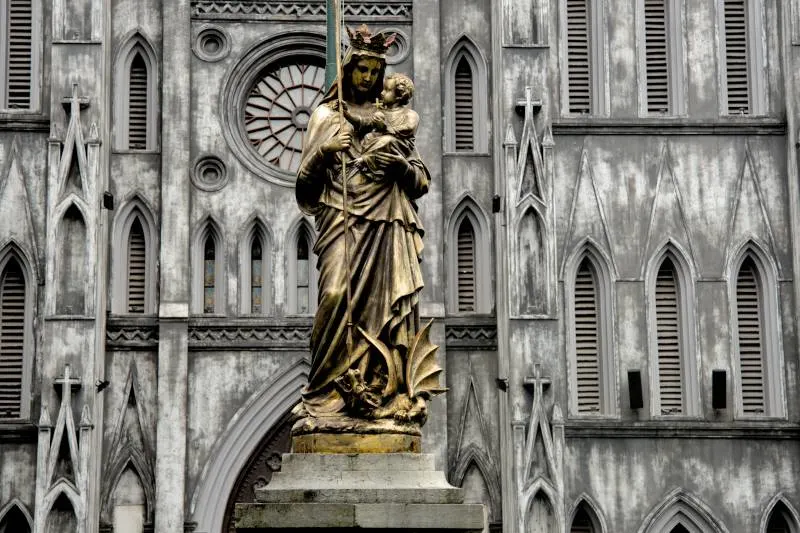
It is built in the Gothic Revival style and resembles the Notre Dame Cathedral in Paris. It is characterized by two prominent bell towers reaching a height of 31.5 meters, a large clock, and elaborate stained glass windows. Construction of the cathedral began in 1884 and was completed in 1886, with its official opening on Christmas Eve of that same year.
9. Ho Chi Minh's Mausoleum
The following day, after returning from Ninh Binh, we visited Ho Chi Minh Mausoleum early in the morning. Hanoi was still experiencing the tail end of a typhoon, which was rainy and very misty.
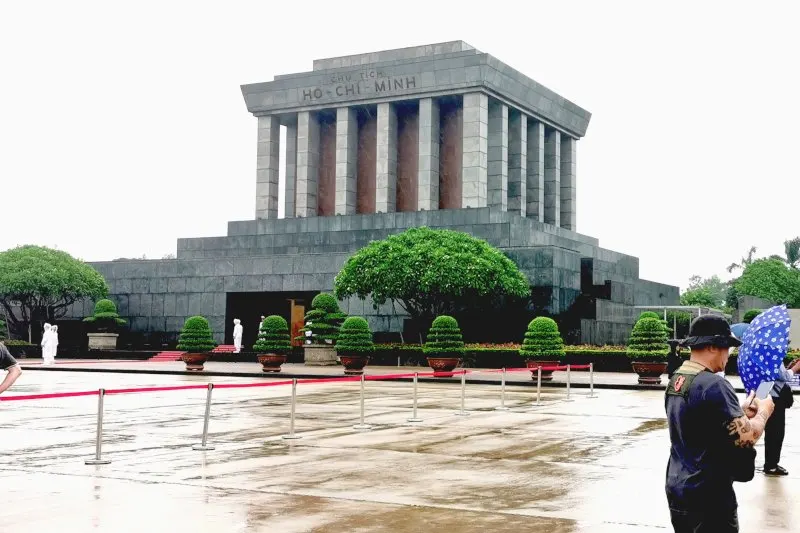
Security at Ho Chi Minh's Mausoleum is very tight. Before entering, we had to go through a thorough body scan, which I can understand given that Ho Chi Minh's body is inside the mausoleum. Our guide informed us that the mausoleum is closed for several months each year to maintain the embalmed body.
Inside the mausoleum, warm lighting created a serene atmosphere. Ho Chi Minh's embalmed body is clearly visible in a glass case. Photography is strictly prohibited. Many soldiers were on strict guard, and visitors were expected to maintain silence, walk slowly around Ho Chi Minh's body, pay their respects, and then leave the mausoleum.
10. One pillar pagoda
On the day we returned to Malaysia, we took a Grab car (similar to Uber) to visit One Piller Pagoda early in the morning. It was close to Ho Chi Minh's Mausoleum, but the pagoda was closed that day due to Typhoon Yagi.
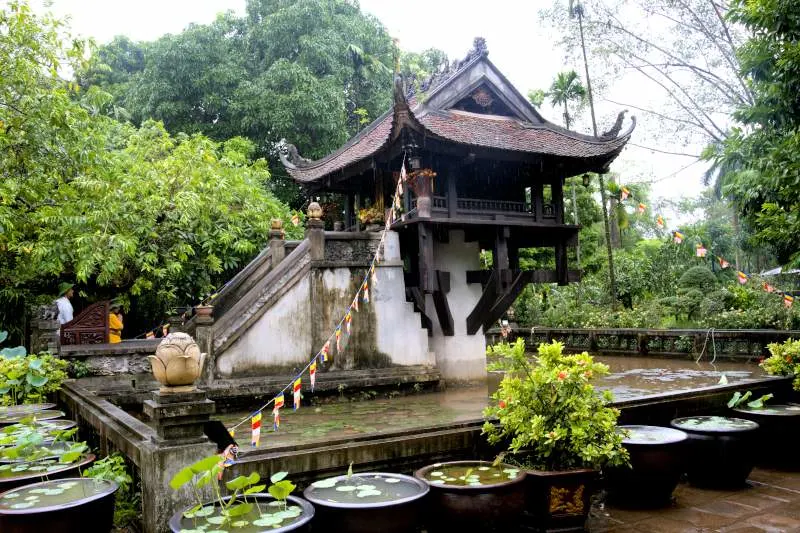
The One Pillar Pagoda is unique not only because it is an ancient Buddhist temple but also because it was built using only one pillar. The main deity inside the pagoda is Kuan Yin (QUÁN ÂM). We had seen the mini version of the One Pillar Pagoda in Lumbini, Nepal, while visiting the Vietnam Monastery there, but what we saw that day was the real deal.
The One Pillar Pagoda, also known as Chùa Một Cột, was originally constructed in 1049 under the reign of Emperor Lý Thái Tông and is renowned for its unique architectural design, which resembles a lotus flower emerging from a pond.
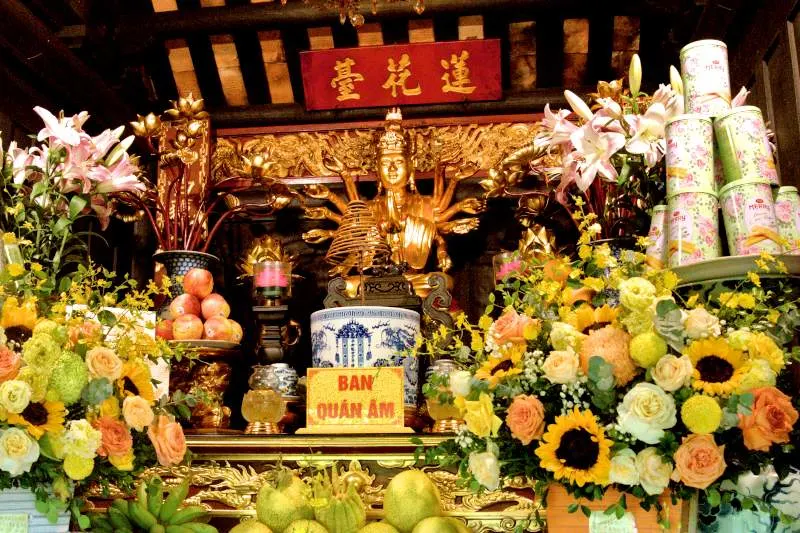
According to legend, Emperor Lý Thái Tông, who had no heirs, dreamt of the Goddess of Mercy, Quan Âm, gifting him a son while she was seated on a lotus throne. In gratitude, he commissioned the pagoda's construction to honor and show his reverence for the goddess.
The One Pillar Pagoda is built on a single stone pillar, standing at approximately 4 meters tall with a diameter of 1.25 meters. The main structure, Liên Hoa Đài (Lotus Station), is square-shaped and supported by eight wooden beams representing lotus petals.
Due to the typhoon, we missed a few places, including Tran Quoc Pagoda, Hanoi Opera House, Imperial Citadel of Thang Long, Ho Chi Minh Museum, and Long Bien Bridge. We flew back to Kuala Lumpur on the same afternoon. Despite the typhoon and chaotic situation, we visited most of the places we had planned. In separate articles, We will document the other places we visited, such as Halong Bay, Sa Pa, and Ninh Binh. Stay tuned!
🎞️ Watch the video shot during our trip
Please watch the video we made for our trip on YouTube. As below:
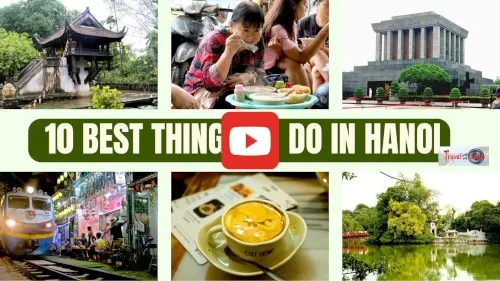

Jaya
Sunday 22nd of September 2024
Great insight to Hanoi I totally loved the experience I had in Sapa. We took an overnight train from Hanoi, then a coach up to Sapa. Walked through hills and terrains with the tribal women in their traditional clothes then ended up having a meal in their village. It was a beautiful experience!
KP
Thursday 19th of September 2024
Hey, I'm KP. If you have any questions about our itinerary and our story in Hanoi, please leave your comment here, and I'll be glad to reply.